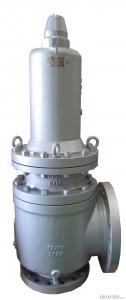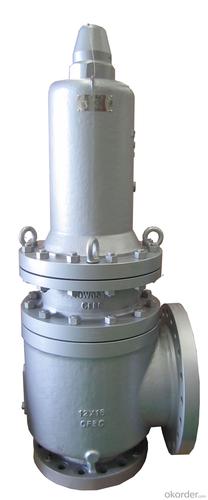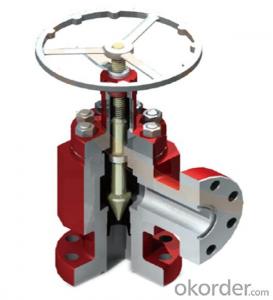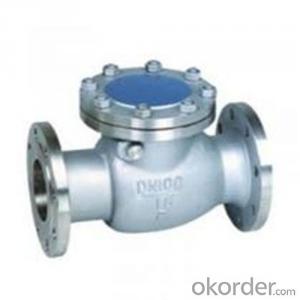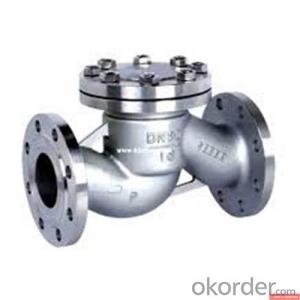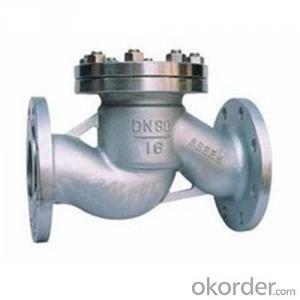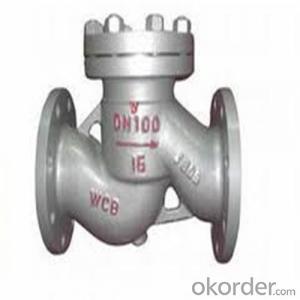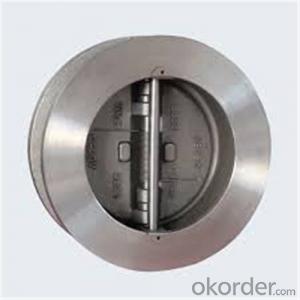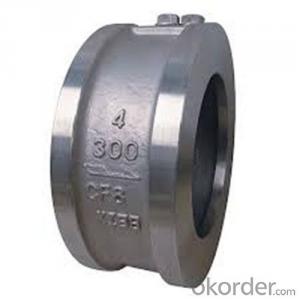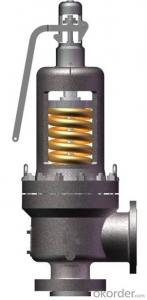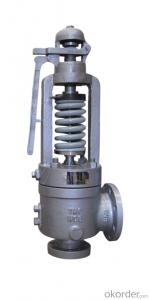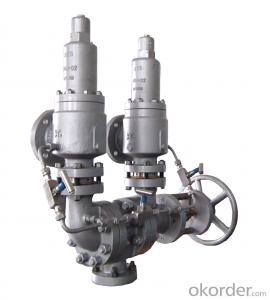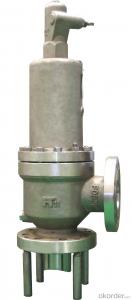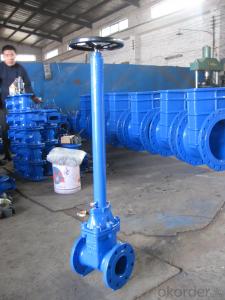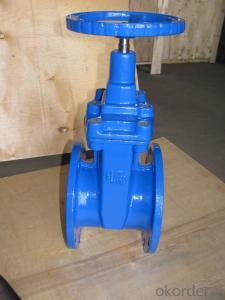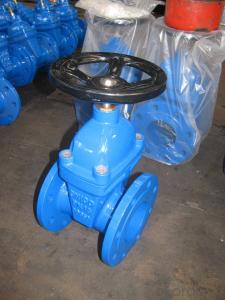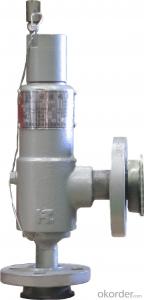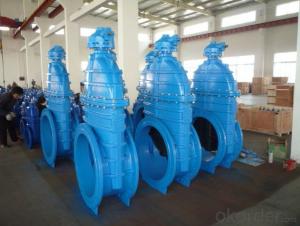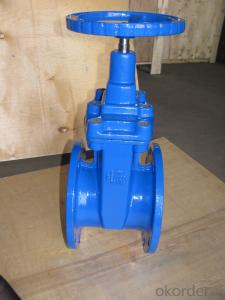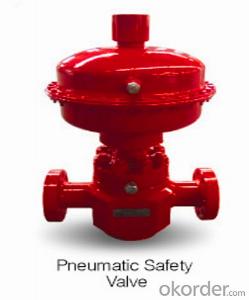High Performance WCB Safety Valves For Steam Service
- Loading Port:
- China Main Port
- Payment Terms:
- TT OR LC
- Min Order Qty:
- -
- Supply Capability:
- -
OKorder Service Pledge
OKorder Financial Service
You Might Also Like
Application:
A pressure relief valve (PRV) is a safety device that relieves overpressure in a vessel or system. When the pressure of vessel or system increased beyond the specified design pressure or maximum allowable working pressure, PRV will be opened automaticly to relief the overpressure for proteding the vessel or system. The PRV will be closed if the pressure reached specified design pressure so that to ensure the normal operation and protect the vessel or system.
Our Pressure Relief Valve has been designed and manuractured according to following Standard:
♦ ISO 4123-1 Safety Devices for Portection Against Excessve Pressure
♦ API STD 526 Flanged Steel Pressure Relief Valves
♦ API STD 527 Seat Tightness of Pressure Relief Valves
♦ ASME Boiler and Pressure Vessel Code Section VIII Division 1, Rules for Construction of Pressure Vessels
Peformance:
♦ Type: Conventional, Bellows
♦ Size:1" D 2"- 8" T 10"
♦ Class:150lb~2500lb
♦ Temperature:-268~+538°C
♦ Fluid: Gas, Steam, and Liquid
♦ Material: Carbon steel, Stainless steel, Alloy steel
♦ The allowable tolerance of the set pressure: ≤±3%
♦ Overpressure: ≤10%(gas)/≤20%(liquid)
♦ Blowdown: ≤10%(gas)/≤20%(liquid)
♦ Tightness: conforms to API STD 527
Features:
♦The solid nozzle is screwed into the body, which makes the maintenance easy.
♦ The shape of the disc holder has been designed to enhance the effect of the fluid thrust for an instant lift of the disc.
♦ Blowdown control is provided with adjustable nuzzle ring only.
♦ The adequate terials and clearance between disc holder and guide , spindle and adjusting screw assures disc to lift successfully.
♦ The surface of both the disc and the nozzle seat are deposited with Stellite. Excellent flatness and surface finish of the seating surfaces by precision machining and lapping assure pressure relief valve to have high degree of seat tightness and long using life.
♦ The bellows of balanced bellows pressure relief valves can not only avoid and effect of variable back pressure in the system , but also protect spring and other trim components from corrosive media.
♦ Materials are chosen carefully , and the manufacture of the spring and the bellows has strict technological process. Each of them is tested and checked strictly.
- Q: The automotive machine shop who is working on my Corolla head and block said that one of the valves was severely burnt. What causes burnt valves???
- Usually a poor fuel/air mixture... running too lean etc... sometimes faulty timing can aggravate the issue as well. Exhaust problems are known to cause this issue in some cases... but so you know, there is a multitude of ways to burn a valve. FYI - Just replacing the valve will not fix the underlying issue... you will end up with the same problem. Once done, you need to start with your fuel and intake mixtures. - Good Luck!
- Q: 1995 Firebird - with digital EGR valve, I think when the engine is at idle, it would be closed, I think.Anyway, this EGR valve has 3 holes that open up whenever.I noticed that the plastic housing on them is melting a little, which probably isn't anything.but I felt around it, and I feel a little air coming out, not from the gasket part, but maybe it has a leak in one of those solnoids somewhere.My cars been idling really ruff, do you think a leak in that would cause it to idle ruff?when I drive, it's fine, runs smooth, but stopping it idles ruff.I just bought that EGR valve 2 years ago, I don't know why it would melt.
- Take the EGR valve off and see if it is internally caked with carbon. Also look at the ports it lines up to on the plenum and see if they are also clogged with carbon. If they are, remove the air intake tube from the throttle body and open the throttle plate. See if the intake plenum is also clogged with carbon. If so, and I think it is, you will need to get yourself a cumbustion chamber cleaning. Those 90s GM cars were bad for this. This will make it idle rough, and also lack as much power as it should have.
- Q: Steam is a gaming network and valve is a company, but what else? I think that it might be nothing; they both suck at working.
- I don't understand this question fully, but I think you like my answer: Steam is a software for gaming articles, but it also meaning gas on another word. Valve (www.google.rs/search?q=Valvehl=srclient=firefox-ahs=SCurls=org.mozilla:en-US:officialprmd=imvnssource=lnmstbm=ischei=8zHfTr2iIsKnhAeTy-yVBQsa=Xoi=mode_linkct=modecd=2ved=0CCgQ_AUoAQbiw=800bih=393) is a legal company, same as meaning the link I put there. Hope it helps! :)
- Q: My 99 accord has been smoking bluish white smoke out of the exhaust only at high RPMS- 5000 and up, but NOT at lower RPMS. Obviously I rarely go that high, but I've feared the worst. I've checked the coolant, its green without contamination. today a mechanic discovered that someone installed the wrong pcv valve on the car- the one that belongs on the v6 model, and that it is somehow larger. the mechanic suggested it was possible that this was the cause of the smoke- the oil was getting into the intake manfold, and into the cat, and that when the engine is at higher rpms, and the gases/ heat increase, it burns up the oil in the manifold/cat. He said IF that is the cause it should clear up in a week or so. Does this sound to good to be true? or is it possible? the car does have 160,000 on it, but i've owned several hondas with much more mileage that didn't smoke at all.
- The PCV valve is a possibility but the more probable cause on your car is that the spark plug tube seals are leaking oil. The 4 cylinder hondas have tubes that surround the spark plugs that run from the valve cover to the top of the cylinder head. There are gaskets on the valve cover to keep oil from getting into the tube from the top and seals at the bottom to keep oil from getting into the tubes from the bottom. on older hondas the tubes fill up with oil and the oil works its way into the engine combustion chambers through the spark plug threads. its real easy to see if this is the problem. Usually you can just pull each of the spark plug wires off. If the end of the spark plug wire is wet then you have leaking tube seals. Typically the seals on the valve cover can be replaced for about $50. if it requires the lower seals its pretty pricy. I think that's what you're going to find. PCV failures are rare as are valve seal leaks or internal engine wear problems on hondas. hope that helps hope that helps
- Q: Mostly suction apparatus with dual head motor, consist a non-return valve, what is its function to have it on the apparatus and not to have it?
- A non-return valve ensures when you stop the motor that what ever material you have sucked does not return back to it's original location. Take the example of a vacuum cleaner and a bowling ball... If you were to pick up the bowling ball with a vacuum cleaner and then turn the vacuum cleaner off, the ball would fall. However, if you had a non-return valve along the piping of your vacuum cleaner, when you turned the vacuum cleaner off the bowling ball (assuming there is a perfect seal between bowling ball and vacuum cleaner's attachment and the piping of the vacuum cleaner did not leak!) would stay attached to the vacuum cleaner and not fall! Non-return valves in the case of suction apparatus, usually act as a safety device to ensure if the power is lost to the motor, that any vacuum that has been produced is not lost.
- Q: can anyone tell me the difference between Pressure Safety valveTemperature Safety ValvePressure Relief Valveused in a process industry
- Pressure Safety valve and Pressure Relief Valve are essentially the same. When fitted on a pressure vessel they limit the internal pressure to specified limits. When the pressure exceeds a set value they open to release the pressure. Some types will maintain the pressure (Like the pressure regulator on a pressure cooker) others will release all the pressure. Temperature Safety Valves are used in boiler type of vessels containing a boiling liquid, which generates the pressure (Again like a pressure cooker). Usually there is an equilibrium between the pressure and the temperature. In such applications a temperature responsive valve is used to control the inside pressure to safe levels. If based on thermal expansion, they can regulate. Otherwise a fusible alloy just melts and releases all pressure in one go.
- Q: My new Trek 1000 has a type of valve stem different from the standard (car type) stem on my mountain bike. Do I need an adaptor to fit it to a pump or do I need a whole new pump? Also, have you seen a tire gauge that fits this stem type?
- These are definately called presta valves. I just bought a trek 6000 MTB and they have the same deal. be careful when you're pumping them using a hand pump as the valve can seperate from the tube causing a very annoying deflation. I'm yet to work out the best way to avoid this (happened to me again this morning), so it's worth carrying a spare tube just in case.
- Q: I have a suzuki bandit 1200 (2001) and I think it needs a valve adjustment. The engine is tapping at idle and while riding but I cant stop riding long enough to get it fixed. All the shops I checked with are booked for a week. Will I make the engine worst by riding it like this?
- Noisy valves are better than quiet ones. Quiet means the valves are not fully closing, and exhaust gases will squeeze out the intake and exhaust ports causing burning of the valve seats. Shouldn't hurt too much to ride it until it's convenient for you. Keep an ear out, if it starts to get louder or somehow changes suddenly, you'll probably want to take it in right away.
- Q: So I just got mu egr valve on my car replaced a year ago. Now it needs replacing again!? why might this be? shouldnt it last longer?
- Everything happens for a reason.
- Q: fisher control valve
- For any pnuematic control valve the operating pressure is from 3 to fully opened at 15 psig. It means a pnuematic control valve opens fully at 15 psi and closes at 3 psig. To calibrate it,prepare the following, one mercury manometer 0 tp 1000mm,Hg, one air pressure regulator for 20psig supply and air hoses,3 to15 psi output gauge, micrometer screw pressure regulator and air pressure supply. Prepare a Tee with the air supply at the center.Connect one leg to the mercury manometer and the other equalizer leg to the control valve and a tee on top of the valve and an output gauge connected to the tee.. Both the manometer and control valve should receive equal pressure from the pressure regulator. A 15psig pressure is 775 mm mercury . So, set the mercury manometer to an equivalent of 15 psig,775mmHg, and prepare a table of equivalent pressure from 3, 6, 9, 12 and 15psig. The valve should be fifty percent open at 9 psig and 25% open at 6 psig, likewise, it should close at 3 psig and 75% open at 12 psig fully opened at 15 psig. The pressure variation may be done with the micrometer type pressure regulator at the pressure supply.
Send your message to us
High Performance WCB Safety Valves For Steam Service
- Loading Port:
- China Main Port
- Payment Terms:
- TT OR LC
- Min Order Qty:
- -
- Supply Capability:
- -
OKorder Service Pledge
OKorder Financial Service
Similar products
Hot products
Hot Searches
Related keywords
